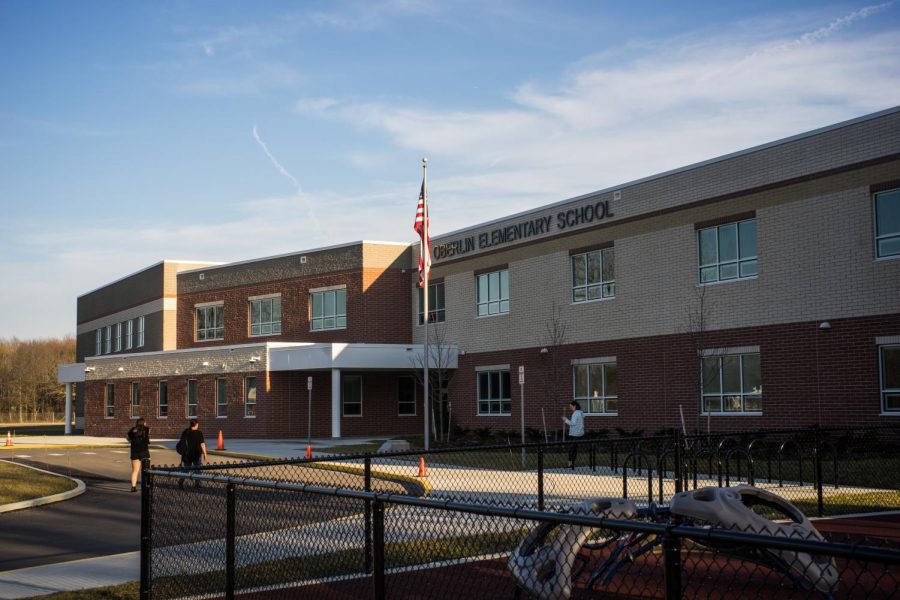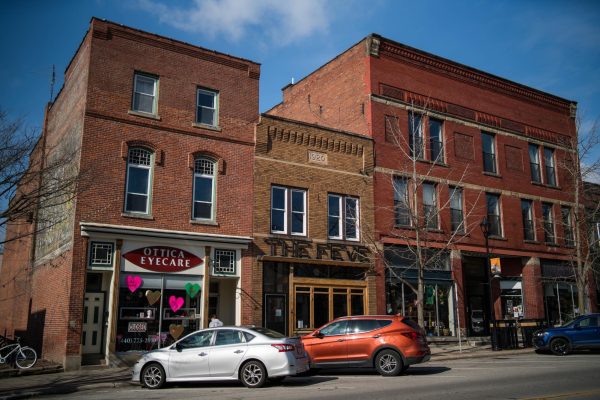OCS Endowment Reaches $1 Million
The Oberlin Schools Endowment Fund supports academic and extracurricular enrichment for the City’s students.
Last week, the Oberlin Schools Endowment Fund reached $1 million. Since 1999, the fund has granted over $530,000 to projects and opportunities that enrich Oberlin City Schools students’ academic and extracurricular experiences.
OSEF funds learning opportunities for OCS students in academics, art, music, and athletics through grants that students, teachers, and community members can apply for. According to OSEF Board President Adam C. Freas, a majority of OSEF grants support classroom initiatives, such as the purchase of sensory chairs, science instruments, and books. However, the fund also supports extracurricular learning opportunities like field trips, community projects, and guest speakers.
“The schools can’t do everything, so we just try to help our students to better their education the best that we can,” Freas said.
Freas explained that OSEF has grown over the past 36 years, primarily due to individual and business donations, which OSEF solicits through an annual appeal letter. However, investment returns and fundraisers have also played a role in the fund’s growth. According to Freas, the OSEF Board realized that the fund was approaching $1 million late last fall, so it centered its fall appeal letter around asking recipients to help the fund meet this milestone. After receiving several donations and investment returns, the fund finally reached $1 million earlier this month.
“Oberlin is a very supportive community, and we’re very appreciative of that,” Freas said. According to Freas, the amount of money OSEF can give out in the form of grants is based on a small percentage of the fund’s three-year average amount. Thus, OSEF meeting the $1 million milestone doesn’t necessarily mean that the fund can drastically increase the amount of money it gives out. However, Freas emphasized that there is no dollar limit on what students, teachers, and community members can request from the fund. This year, he said OSEF has about $37,000 to give out in grants.
“Teachers can be very creative,” he said. “Whatever their thoughts are — their ideas, their dreams — they can present those to us. We don’t put a cap on what they present or a dollar amount.”
When asked about how OCS benefits from OSEF, OCS Marketing and Communications Consultant Melissa Linebrink mentioned notable initiatives the fund has supported. According to Linebrink, OSEF granted money to support the district’s Backpack Program, which helps combat food insecurity that students face on weekends without school meals. OSEF also financially supported the visit of Michael Williams, the author of the children’s book The Brown Crayon, to OCS.
“We are grateful for the Oberlin Schools Endowment Fund for the financial support they have provided the Oberlin City School District,” Linebrink wrote in an email to the Review.
Although many OCS students and teachers apply for OSEF grants for projects that enrich students’ experiences, community members and those not directly affiliated with OCS can apply for grants to support projects that benefit students as well. Oberlin community member Tanya Rosen-Jones received two grants from OSEF to support the creation of the We Are Oberlin mural behind the Oberlin College Bookstore. Amazed that no one had defaced the original 1996 mural in this location, Rosen- Jones researched and learned that its creator had incorporated middle school students into the mural’s creation.
“If young people get involved in a project, it brings a whole community together,” Rosen-Jones said. “There’s ownership and pride that can happen there.”
Rosen-Jones wanted to involve Oberlin High School students in painting a new mural over the original mural, contingent on permission from original artist Brenda Grier-Miller and her daughter Imani Miller-Annibel. Rosen-Jones said that part of the purpose of involving high school students was to demonstrate to students through the mural creation process that creating art is a viable career path.
“I decided I wanted to work with the high school students and show them that art is also a job,” she said.
Rosen-Jones also hoped to foster pride in Oberlin High School students by working with them to brainstorm ideas for the mural. During a three-day brainstorming session, Oberlin High School students considered what makes Oberlin special.
“I really just wanted to do something positive that could bring people together,” she said. “I’m hoping Oberlin kids can be super proud of where they come from.”
Rosen-Jones used the grants from OSEF to finance the installation of the mural and pay the muralists for their time in the brainstorming process. She emphasized that OSEF’s support played a key role in the mural’s creation.
“I’m grateful to [OSEF] for their support, believing in my vision, and believing in our students,” she said.







